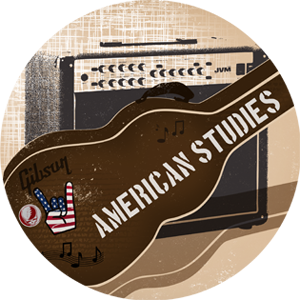Jeff Clymer
IAS 301: Race/Sex/Money & American Culture
IAS 301 is an interdisciplinary course, which means that we will read novels as well as historical documents, study photographs, and view movies. This course is arranged around a particular theme, and our theme this semester will be the many and strange intersections of racial identity, sexuality, and money during the last 150 years in the US. Slavery will loom large in the first weeks of the course, and, among other things, we’ll learn about white slave owners who tried to live in “normal” marriages with their enslaved “wives”. We’ll read about the history of an enslaved woman put on trial for murdering her owner after years of sexual abuse. When we turn to the 20th century, we will study about the life and times of Jack Johnson, the first black heavyweight boxing champion who was arrested for crossing state lines in the company of white women, and we’ll also figure out if Jay Gatsby in Fitzgerald’s famous novel is really white—and if not, what that might all mean in a book so fascinated with family genes and family money. During this section of the course (the 1920s), we will also read a novel about a fair-skinned African American woman who “passed” and became a wealthy, and troubled, white wife. Finally, we will finish with one of the most monumentally cool books of the 20th century, Ralph Ellison’s Invisible Man, and the award-winning novel that rearticulated its themes for our contemporary moment in 2007’s Man Gone Down. Throughout the semester, we will also give time to thorny contemporary racial/economic issues, such as the idea of reparations for slavery.
Marion Rust
IAS 301: Early American Autobiography
In this class, we will study the self-representations of a variety of individuals both “ordinary” and famous. Employing paintings, statues, manuscripts, books, newspapers, photographs and film, we will consider how early Americans inscribed themselves on the world and the fate of their works in antebellum culture and beyond. Topics will include childhood, criminality, non-domestic female labor, transatlanticism, abolitionist culture, and the tension between fact and fiction in any act of self-narration. Here are a few questions that might come up: If a slave born in South Carolina invents an African birthplace, how does that change our understanding of his narrative? What happens when the disaffected son of a famous painter-scholar attempts a self-portrait, and how do these change over the course of his life? How do we make sense of a colonial midwife’s journal, and what does the historian who helps us in that effort reveal about her own identity? Why did nineteenth-century bereaved parents have pictures taken of their dead infants? Finally: how have U.S. readers of classic early American autobiographies, from Benjamin Franklin’s to Frederick Douglass’s, used these works to foster their own self-image?
Professor Alan Nadel
IAS 301: Representing Reality: Non-Fiction Novel and Documentary Film
This course will examine in a cultural context some of the ways “reality” and “history” are represented in a number of post-WWII books and films that employ the rubric “non-fiction” but may use an array of methods and conventions associated with fictional narrative to anchor their veracity or their claims to verisimilitude. We will read works by Joan Didion, Truman Capote, James Baldwin, and Michael Herr. We will also examine films by Michael Moore, Errol Morris, and Connie Field, among others. Requirements: class presentation, two take-home exams, and some short quizzes.
Andy Doolen
IAS 301: The Fugitive in American Culture
The plight of the fugitive, on the run and pursued by the law, has long been a powerful and historic icon in American culture. Since the American Revolution, both the figure and the idea of the fugitive were integral to national debates on freedom, property, law, and race. This course will revisit these debates, as well as trace how the fugitive eventually became a heroic character in novels, movies, rap music, and other forms of mass entertainment. The first part of the course primarily focuses on the fugitive slave, whose flight along the Underground Railroad made the figure a national phenomenon. We will read a wide range of documents in which the fugitive appears: laws, poetry, drama, fugitive slave narratives, “runaway” broadsides and advertisements, and Mark Twain’s The Adventures of Huckleberry Finn. Depending on the audience, the fugitive slave could either be a sympathetic figure, representing the inhuman practices of slavery, or a subversive figure, threatening social and political order. This was one reason why the fugitive slave became a compelling and tragic figure in nineteenth-century American culture, and continued to be popular after the abolishment of slavery. The second half of the course explores the transformation of the fugitive slave during the twentieth- and twenty-first centuries. As a pop icon often attempting to transcend race, the modern fugitive returns to fundamental questions about freedom and power in the United States.


